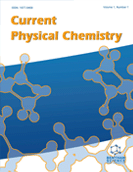
Abstract
Background: The synthesis of Fe2O3/ZnO nanocomposites has gained wide acceptance in recent years due to its magnetic, photoluminescence and catalytic properties, and as an active element in gas sensors. This type of composite particle has potential biological and biomedical applications such as the detection of cancer cells, bacteria and viruses, and for magnetic separation.
Objective: In the present study, first we synthesized the Fe2O3/ZnO nanoparticles, and then the structural, optical and surface morphological properties were investigated by XRD, HRTEM, FESEM, XRF and FTIR analyses.
Methods: Fe2O3-ZnO nanoparticles were fabricated by a solgel synthesis method by combining iron chloride hexahydrate and zinc sulfate heptahydrate. In the beginning, 2g of Polyvinylpyrrolidone (PVP) stabilizer was dissolved in 100 mL deionized water and then 5 g FeCl3 was added to the solution with stirring at room temperature. Then 5g of ZnSO4 was added to the solution and synthesis temperature was increased to 100 °C. The product was evaporated for 3 hours, cooled to room temperature and finally calcined at 600 °C for 3 hours.
Results: The XRD results showed single-phase Fe2O3-ZnO nanocomposites with a hexagonal wurtzite structure of ZnO and spinel phase of rhombohedral α-Fe2O3. The crystallite size of as-prepared sample was determined at about 45 nm and annealed one was calculated around 40 nm. The SEM images showed that the Fe-Zn nanoparticles changed from spherical shape to rod shape by increasing the temperature after annealing. The TEM studies showed the core-shell nanoparticles with a mean diameter of 47 nm. The sharp peaks in the FTIR spectrum determined the stretching vibrations of Fe and Zn groups in the frequencies of 620, 565 cm-1 and 410 cm-1.
Conclusion: The XRD data indicates a single-phase Fe2O3-ZnO structure. The SEM images show that the nanoparticles changed from sphere-like shape to rod-like shape by increasing the annealing temperature. TEM image exhibits the core-shell Fe-Zn nanoparticles with an average diameter of about 37 nm. From the FTIR data, it is shown that the presence of Fe-Zn stretching mode and the intensity of the peaks increased by increasing the annealing temperature. XRF analysis showed peaks of iron and ferrite elements, and an increase in the Zn weight percent was observed from 26.35 %Wt. to 49.26 %Wt. with increasing temperature.
Keywords: Fe2O3-ZnO nanocomposites, solgel synthesis, optical properties, morphology, nanorods, HRTEM, XRD, FESEM.
Graphical Abstract












